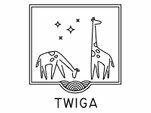Most geodata applications for food security are still in the pilot stage. Geodata specialists tend to look to general digitalization initiatives for inspiration. The idea is to learn from them as they started earlier and are supposedly more advanced. Is this true? Apparently not, if you look at the latest World Bank report on digital transformation of the agrifood system. Read Here
The report stresses the importance of reducing high transaction costs and information asymmetries and I like the distinction between on-farm and off-farm digital technologies and the emphasis on environmental sustainability. But if you want to know about the way forward, the focus is very much on the “what” and not on the “how”. It’s not that it isn’t a good report, it is just that I expected more. Evidently, not only geodata applications but also digitalization initiatives in general still face many challenges.
Similarly, the demand for the creation of a new, digital ecosystem is accompanied by a plea for investment, but then the reader is left in the dark on how this will be achieved in developing countries. Granted, this is a very difficult issue, but I would have expected more insight, especially if you look at the positive picture that earlier reports sketch. Which reports are these? I mention a few:
Key World Bank reports, one with the AfDB and the AU from 2014 on the transformational use of ICT in Africa (Read Here) and the sourcebook on ICT in Agriculture from 2017 (here) give examples and indicate possible gains from digitalization. This is why you would expect (or hope for) a structural embedding of digital solutions by 2021, but for many of the case studies it is difficult to find information on the current state-of-affairs and, assuming that successes will get publicity, this is disappointing.
Maybe I am just too impatient. Examples presented in more recent reports are easier to trace. Have a look at the Dalberg/CTA report on the digitalization of agriculture here, the GSMA agritech toolkit here, or the digital agriculture map GSMA 2020 here
In summary, a comprehensive ecosystem for digitalization in agriculture in developing countries seems still a long way off. For the “how” we have to go back to our pilots again (such as those of G4AW and NpM, now part of the Netherlands Advisory Board (NAB), and those presented in the reports above) and take it from there. Incremental, organic growth and system of approach (such as GEOSS) can be effective. The message to projects like AfriCultuReS and TWIGA and others is: focus on compatible and replicable building blocks that could fit in such an approach. These could then be used for a combination of applications in agriculture, climate adaptation, and environmental sustainability.
RELATED TWIGA SERVICE: DIGITAL PLATFORM

